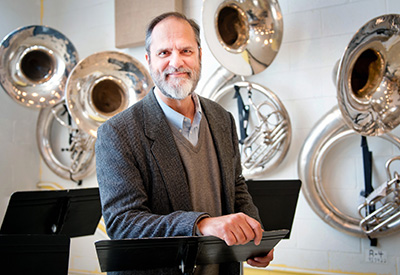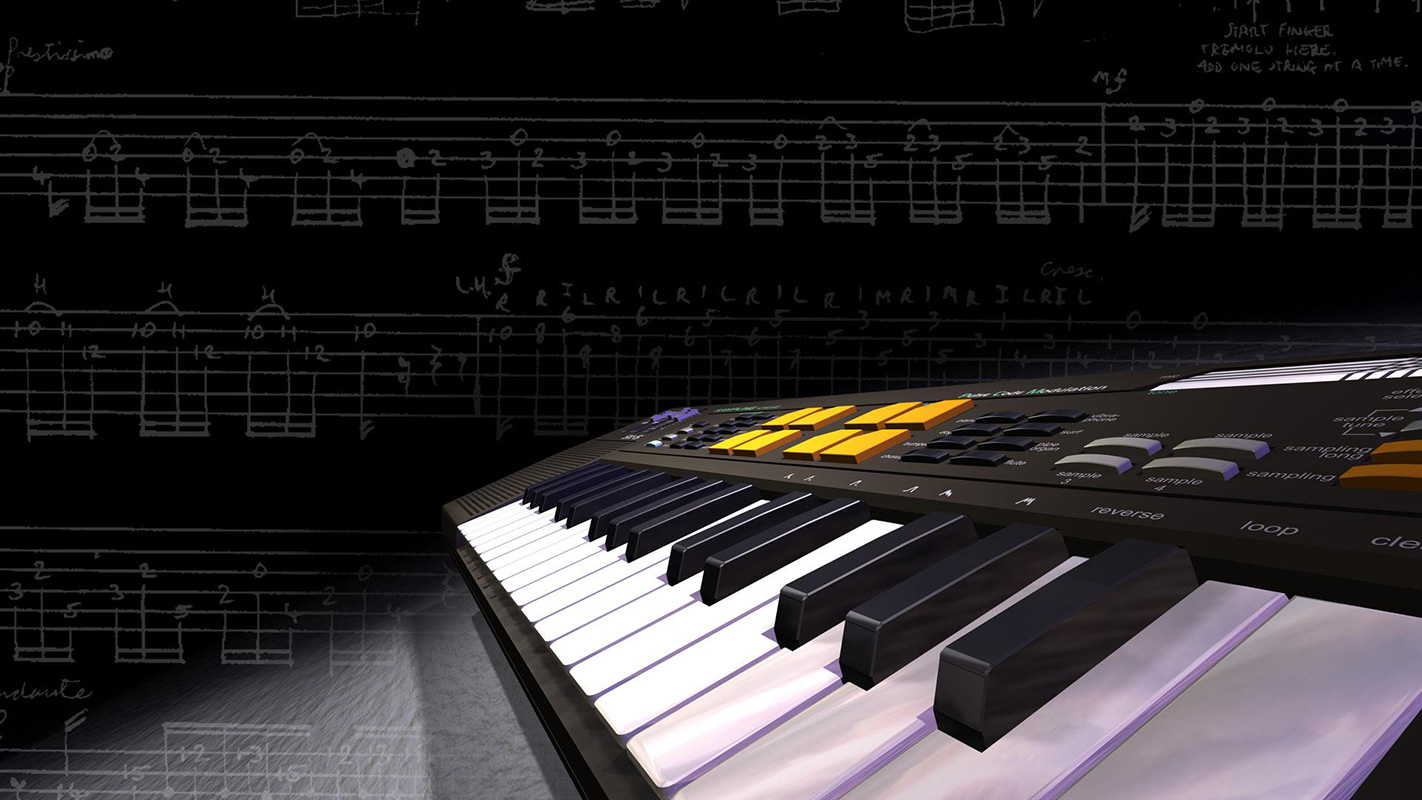Composer Rodney Waschka has created a set of musical “portraits” that include two pieces based on NC State faculty members. The set of electronic computer music pieces includes A Portrait of Stephanie Spencer and A Portrait of Jonathan C. Kramer. Spencer is an art historian and history professor; Kramer is a cellist, ethnomusicologist and professor in the music department.
Waschka, renowned for his pioneering work in computer music, made the pieces using different artifacts related to the two faculty members, including photographs and sound recordings.
He utilized an image of the cover of Spencer’s recent book, Francis Bedford, Landscape Photography and Nineteenth-Century British Culture: The Artist as Entrepreneur and a photograph of the historian with her horse, Clancy, as basic material for the piece. He mapped the visual images into sound using computer programs and then added manipulated recorded elements. For example, in the Spencer piece, he incorporated the sounds of a horse trotting by as well as rocks tapping against each other. For the Kramer portrait, he employed recorded excerpts of the professor playing the cello.

Waschka, a professor and director of arts studies at NC State, says he was inspired by the composer Virgil Thomson, who wrote more than 150 musical portraits between the late 1920s and the early 1980s.
“I thought I might enjoy updating the idea by doing it in electronic computer music.”
Both pieces were recently performed in North Carolina. A Portrait of Stephanie Spencer was presented Feb. 17 at the annual Southeastern Composers League Forum, held at Campbell University. A Portrait of Jonathan C. Kramer received a special preview performance Feb. 7 in Stewart Theatre during a concert that featured Kramer and other faculty members from NC State, UNC Greensboro and Converse College.
Waschka’s set of portraits also includes A Portrait of Pablo Picasso By One of His Lovers and A Portrait of Paul Berg. The Picasso portrait received its world premiere at the International Computer Music Conference in Athens, Greece in 2014 – performed in the former Greek National Bank/Stock Market building. Within weeks the work enjoyed national premieres in Mexico City and New York City. Waschka completed A Portrait of Paul Berg only within the past few weeks. Berg was one of Waschka’s mentors at the Royal Conservatory of The Netherlands.
“Almost all of Virgil Thomson’s portraits were done ‘from life’ – the subject would literally sit in front of Thomson and he would compose music while looking at the person. Many of the portraits were of his friends, but others were simply commissions,” Waschka says. “People paid for a musical portrait as they would for a painted or drawn portrait.”
Waschka says he chose Picasso as the subject of his first portrait because he didn’t want to involve a friend or colleague in what might have been a disappointing experiment.
“Also, I knew that Thomson had done a Picasso portrait, but to give mine a twist I tried to imagine the work from the point of view of one of his former lovers. I used one image of Picasso himself and a photographic image of a Picasso painting for that piece,” he says. “After that portrait worked out well, I tried making portraits of friends.”
Listen to an excerpt from A Portrait of Stephanie Spencer:
Listen to an excerpt from A Portrait of Jonathan C. Kramer:
- Categories:



